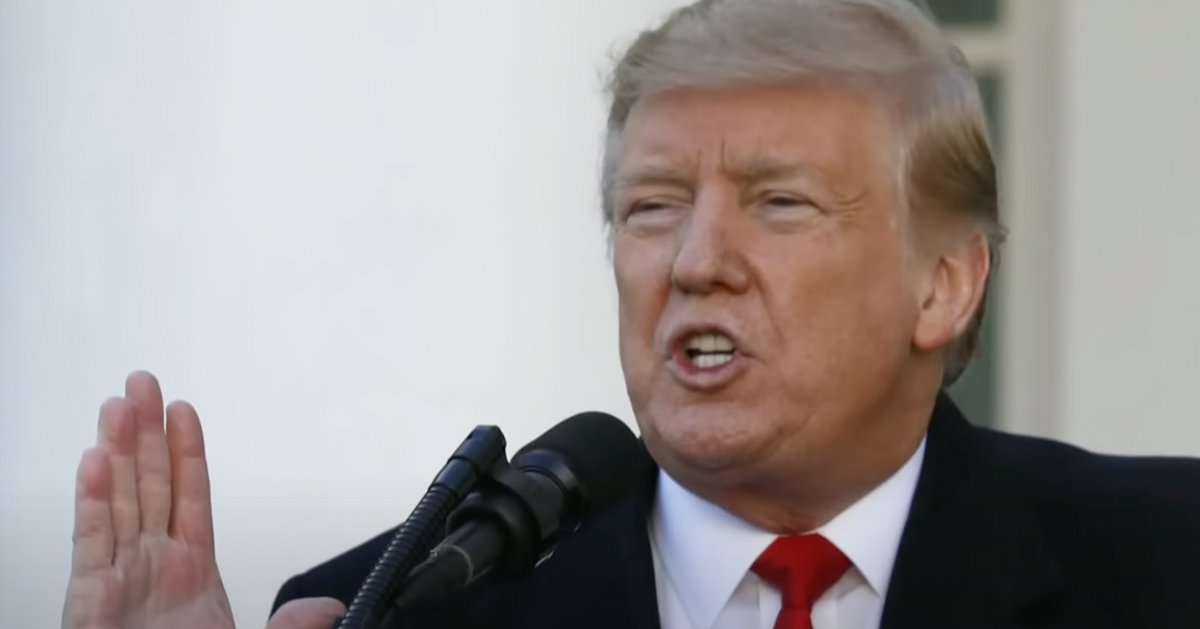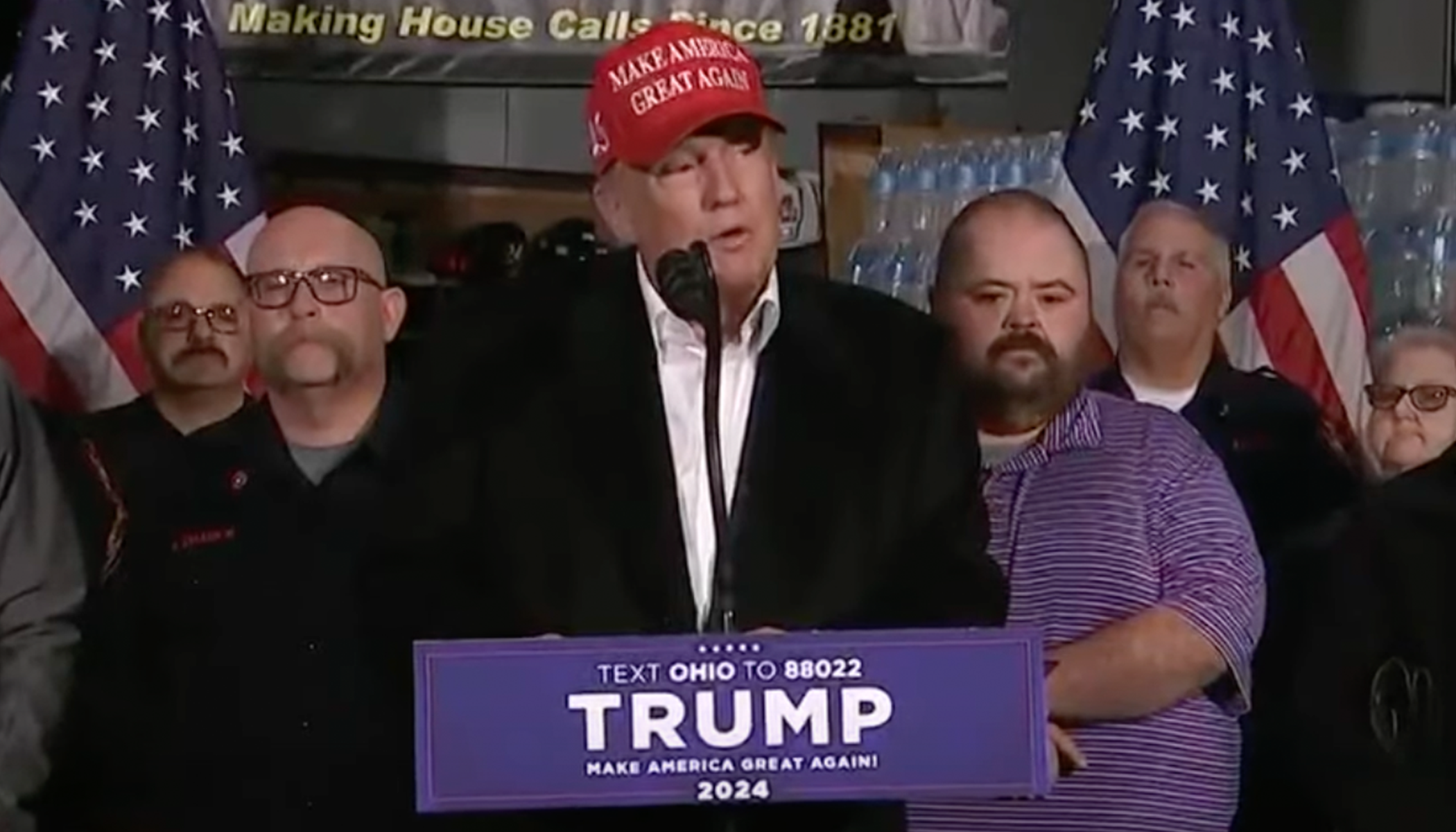Trump Advocates for Tax Cuts to Boost American Manufacturing
President Donald Trump addressed the World Economic Forum via video call, proposing significant tax incentives and tariffs aimed at reshoring manufacturing to the United States.
Trump outlined his administration’s plans to extend prior tax cuts, implement new ones, and enforce tariffs on foreign-made goods to attract investment and strengthen the U.S. economy, as Fox Business reports.
Speaking to global business leaders from Davos, Switzerland, Trump emphasized that his policies would make the United States the most attractive destination for companies to produce and invest. His proposals include what he described as the "largest tax cut in American history," targeting domestic workers, families, manufacturers, and businesses.
Major Tax Cuts Aim to Reshape Economy
Trump detailed plans to extend the original tax cuts introduced during his presidency, which are set to expire at the end of 2025. These tax cuts include reduced individual rates, an expanded standard deduction, and an increased child tax credit. He highlighted ongoing efforts to collaborate with Democrats to secure this extension.
In addition to preserving earlier tax reductions, Trump proposed new incentives to lower corporate tax rates further, ensuring the U.S. remains one of the most competitive countries globally for businesses. The strategy, according to Trump, aims to attract multinational corporations to establish operations on American soil.
“My message to every business in the world is simple: come make your product in America, and we will provide among the lowest taxes of any nation on earth,” Trump stated during his address.
Tariffs Proposed for Overseas Manufacturing
As part of his push for domestic manufacturing, Trump warned companies that outsourcing production would come with financial consequences. He proposed an across-the-board tariff ranging from 10% to 20% on all imports, with specific penalties for products from certain countries.
Goods from China, for instance, could face tariffs as high as 60%, while imports from Canada and Mexico may see rates of 25%. Trump announced that the first wave of these tariffs could take effect as early as Feb. 1, signaling the administration’s urgency to implement these measures.
“If you don’t make your product in America, then very simply, you will have to pay a tariff,” Trump said, explaining how the revenues from these measures would bolster the U.S. economy and help reduce national debt.
Economic Optimism Backed by Investments
Trump used his speech to highlight a wave of new investments as evidence of the positive impact of his economic policies. Companies such as SoftBank, Oracle, and OpenAI have pledged hundreds of billions of dollars toward AI infrastructure and other projects in the U.S.
SoftBank alone has committed to investing between $100 billion and $200 billion. Meanwhile, Oracle, SoftBank, and OpenAI announced a joint $500 billion initiative to develop AI infrastructure. Other international firms have followed suit, including DAMAC, a UAE-based company, which plans to invest $20 billion in U.S. data centers, focusing on regions like the Sun Belt and Midwest.
Saudi Arabia’s Billions in U.S. Investments
Trump also shared significant foreign investment announcements, particularly from Saudi Arabia. He noted that the kingdom is planning to invest at least $600 billion in the U.S. economy, with potential for the figure to reach $1 trillion. Trump credited this optimism to the economic environment his administration has fostered.
“There will be no better place on earth to create jobs, build factories, or grow a company than right here in the good old USA,” Trump declared.
Domestic Growth at Heart of Trump’s Vision
The speech underscored Trump’s broader vision of transforming the United States into a manufacturing and economic powerhouse. His proposals aim to not only attract international businesses but also empower American workers and families through financial relief and job creation.
By coupling tax incentives with penalties for outsourcing, the administration hopes to drive a resurgence in domestic manufacturing and decrease reliance on foreign imports.
Tax Policy and Tariff Debate
While Trump’s proposals have drawn praise from supporters for their potential to boost domestic production, they are likely to face scrutiny from economists and political opponents. Critics argue that tariffs can increase consumer costs and potentially strain relationships with trading partners.
Nevertheless, Trump expressed confidence that his policies would strengthen the U.S. economy and secure a competitive edge globally. “We’re directing hundreds of billions, even trillions of dollars, into our treasury to pay down debt and strengthen the economy,” he stated.
The Path Forward for U.S. Manufacturing
As the U.S. looks ahead to 2025, the expiration of the original tax cuts remains a key focus. Extending these measures, alongside implementing the proposed tax and tariff policies, could significantly shape the nation’s economic trajectory in the coming years.
Trump’s message to the world was clear: America is open for business. By combining tax reforms, strategic tariffs, and foreign investments, the administration aims to create a thriving environment for businesses and workers alike.






